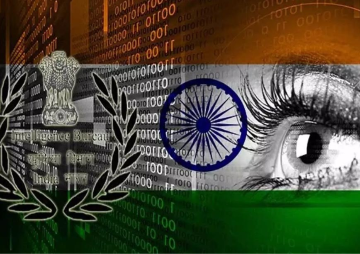In the digital world a week is akin to a month and a month is a year. Thirteen years, then, is an era. No wonder the National Telecom Policy 2012, which has replaced the policy of 1999, has generated such a lot of buzz. Most of the attention has centered on the proposed one-time spectrum fee, delinking of spectrum from licence, spectrum sharing, trading, re-farming and pooling and license renewal fee. The last has not been heard on spectrum pricing as the Telecom Regulatory Authority of India (TRAI) is slated to present a detailed analysis to the Department of Telecom (DoT) before the ministerial meeting on June 5, 2012.
But the NTP 2012 is not just about spectrum. Lost in the glare of the limelight on spectrum are several other proposals. Some are imaginative and potentially path-breaking, while others are at best vague and at worst downright silly. First up, let’s take up the good bits. The most imaginative set of stated aims from NTP 2012 deal with looking at mobile phone as a device for transaction, governance and empowerment, use of cloud computing and the convergence of network, services and devices. If mobile phones are actually paired and synchronised with other devices and cloud is used to store transaction and non-transaction data and provide services, a real governance revolution is possible.
Every attempt towards digitising government data and roll out of e-governance and m-governance initiatives has met with single-minded intransigence from sections of the bureaucracy. The last couple of years have been particularly difficult, witnessing a concerted sniping campaign against cloud computing using the cover of security. Some security concerns are genuine, but most are what the old world English gentlemen would call balderdash. NTP 2012, in a sense, makes a clean break from the naysayers recognising the potential of cloud computing, convergence and mobile phones. There is, of course, another saying derived from the old world English habit of drinking endless cups of tea that is an appropriate caveat. There is many a slip between the cup and lip.
For long, the Indian consumer has been gypped by the telecom companies, both private and public, on the back of a vague definition of what actually constituted a broadband connection. The manner in which the telecom companies have been stretching the ’up to’ in ’up to 2 mbps’ would have put the great Houdini to shame. While on paper we have been at the international bare minimum threshold of broadband - a minimum of 2mbps - for several years, the reality always ranged anywhere between 256 kbps to 512 kbps. The NTP 2012 clears up the air finally. An internet connection sold by a telecom company cannot be termed as broadband unless there is a guaranteed minimum speed of 2 mbps. It’s not a big leap in terms of international standards, where broadband speeds routinely touch 8 mbps, but it’s a step in the right direction. By setting this explicit standard, NTP 2012 implicitly recognises that the digital governance mindset has to move from just provisioning of bandwidth to providing quality bandwidth.
Roaming charges have been an unending puzzle for the Indian consumer. No one really knows, even till today, how roaming charges are calculated and why it differs so drastically not only from one service provider to another but also from one customer to another. With increasing use of smartphones and mobile internet, the puzzle has only got complicated. NTP 2012 abolishes roaming charges. The much harried consumer, however, will have to wait a little longer as the Department of Telecom (DoT) still has to work out the modalities of implementing a nation-wide mobile number portability service.
Now, let’s take up vague bits of the policy. The policy’s stated aim is to increase rural teledensity from the current 39 percent to 70 percent by the year 2017 and finally to 100% by the year 2020. How it plans to do that is not clear. There is a note of caution that needs to be sounded here. The National Broadband Plan of 2004 had set up a relatively modest target of piping in broadband connections (up to 512kbps) to 20 million households by 2010. Just about 13 million homes have been reached till May 2012. As the broadband plan shows, setting up targets is the easy part. How to go about achieving it is the tough part.
The NTP 2012 states that it seeks to make India a ’global manufacturing hub’ for telecommunications hardware in order to ensure that the prices of devices come down in India. The critical pieces of ’by when’ and ’how’, which are not mentioned at all in the NTP, are dependent on the Electronics Manufacturing Policy. The Electronics Manufacturing Policy, by the way, is still in the drafting stage and will have to go through the Cabinet.
Let’s take up two silly bits to underscore the silliness quotient of the policy. Here’s the first bit. The NTP advocates the adoption of new generation networks and IPV6. Here’s the truth. Not only India, but all countries of the world will have to move towards IPV6 because the Internet Protocol addresses, which is the unique number that identifies users and websites, in the IPV4 series is rapidly running out. There is no other option but to move to IPV6.
The second bit is this: "The policy envisions providing secure, reliable, affordable and high quality converged telecommunication services anytime, anywhere for an accelerated inclusive socio-economic development." It sounds very good and important. Now, can someone tell me what does it really mean?
(The writer is a Visiting Fellow at Observer Research Foundation. He is also a National Internet Exchange of India (NIXI) Fellow)
Courtesy: Governance Now
The views expressed above belong to the author(s). ORF research and analyses now available on Telegram! Click here to access our curated content — blogs, longforms and interviews.




 PREV
PREV

